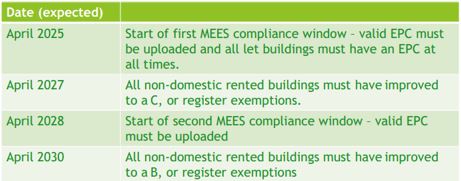Futureproofing your buildings against EPC changes
Due by the end of last year, but not yet arrived, was a review on the EPC validity and triggers. This is important because it could mean that EPCs no longer last 10 years, with more situations triggering their requirement, such as tenant fit-outs or works that require a building regulations application.
This has major implications for all parties should a tenant’s fit-out trigger an EPC – an EPC that could potentially put the property in breach of the minimum energy efficiency standard if it was not specified with energy efficiency in mind.
Poor EPC ratings impact portfolio value, lending ability, shareholder satisfaction and (anecdotally) property value – both sale and lease.
We suggest that property owners have working models for all their buildings. This allows almost real-time analysis of any changes to the configuration or fit-out and allows Capex levels of analysis by a range of consultants, streamlining property energy and maintenance management. We call this a Model for Life.
With the target EPC B rating set for 2030, the Model for Life would allow for refinement and upgrade as the building improves along the way, detailing impacts, changes to be understood quickly and provide a passport for a property that can be used and assessed at change of use or ownership with complete transparency.
The government’s new operational ratings are due this year and will require building owners and tenants to report their actual billing data and acquire a rating from an assessor. Many corporate property owners are already looking at ESG and net-zero strategies. Building models will be a key part of this.
As of April 2023, the final date of the initial minimum energy efficiency standards for non-domestic buildings comes into force and all buildings tenanted should have an EPC of E or better or be registered on the exemptions list.
The consultation on the next phase of the minimum energy efficiency standards for non-domestic buildings suggests by 2025 all let buildings are likely to always need an EPC, rather than just when they are sold or let.
The timetable for the next phase of the MEES regulations then looks like this for non-domestic buildings:

As regulation tightens and landlords are increasingly pressured to ensure their properties are compliant, the commercial property industry must transform. It is time to align the various compliance requirements, so often seen in isolation currently.
Selected industry experts bring you insight and expert advice, across a range of sectors.
Subscribe for free to receive our fortnightly round-up of property tips and expertise
Selected industry experts bring you insight and expert advice, across a range of sectors.
Subscribe for free to receive our fortnightly round-up of property tips and expertise





